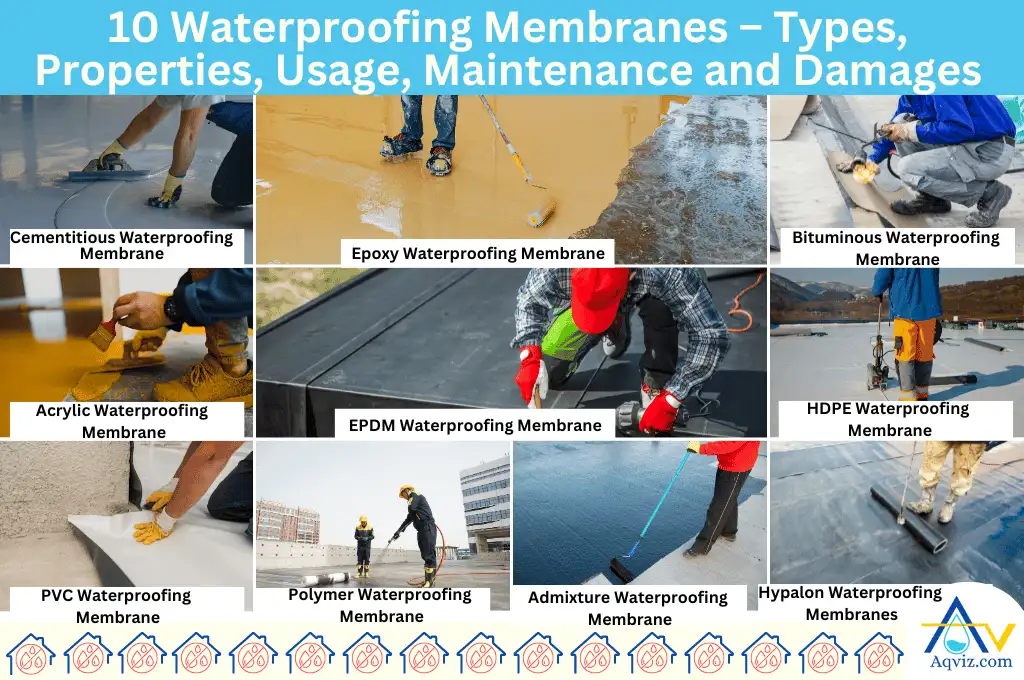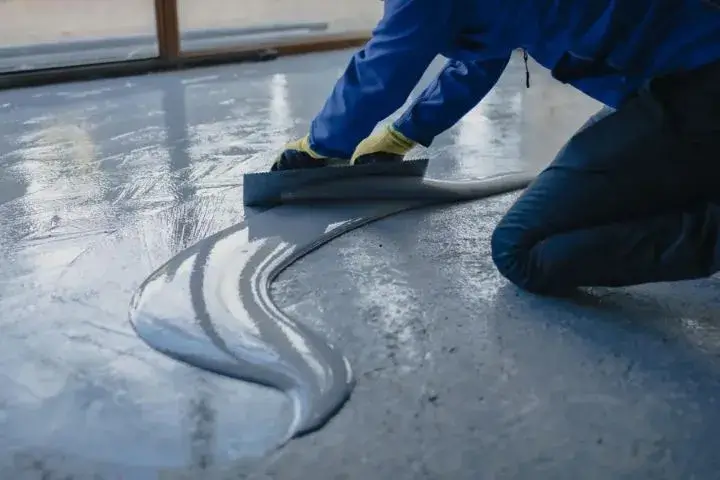Top 10 Reasons to Invest In Basement waterproofing Omaha for a Mold-Free Living Space
How Waterproofing Works: A Thorough Consider Methods and Technologies
Waterproofing is necessary for safeguarding frameworks from moisture-related damage. It includes various methods and technologies that produce obstacles against water invasion. Traditional techniques, such as compressed clay, exist together with modern-day developments like liquid-applied membrane layers. Understanding the nuances of these strategies is important for reliable application. The effectiveness of any type of waterproofing option pivots not only on the techniques utilized yet also on continuous upkeep and examination. What are the key elements that affect lasting efficiency?
Understanding the Basics of Waterproofing
Waterproofing is a crucial procedure that protects structures from water intrusion, which can result in considerable damages with time. This approach entails the application of various materials and techniques developed to produce an obstacle versus dampness. The key objective is to stop water from passing through surface areas, which can create damage, mold and mildew development, and architectural instability.Various variables affect the selection of waterproofing approach, consisting of the kind of framework, its place, and environmental conditions. Understanding the physics of water movement and the buildings of various products is important in picking a reliable waterproofing solution.Effective waterproofing not just safeguards structures yet additionally boosts their long life and stability. Usually, it is integrated right into the layout stage of building to guarantee thorough defense. As recognition of water-related problems grows, the relevance of recognizing waterproofing basics becomes progressively clear to architects, builders, and homeowner alike.
Traditional Waterproofing Methods
Traditional waterproofing approaches have been utilized for centuries, relying upon tried and true strategies and products to safeguard frameworks from water damage. Among the oldest approaches includes the usage of clay, which, when compacted, creates an all-natural barrier against dampness. Furthermore, bitumen, a sticky, black product derived from oil, has been utilized for its waterproof residential or commercial properties, usually applied to roofs and foundations.Another strategy involves the application of lime-based plasters, which supply a breathable layer that allows wetness to escape while protecting against water ingress. Thatch roof covering, a traditional approach still seen in some cultures, uses outstanding waterproofing because of its tightly packed straw layers.Moreover, the usage of rock and brick has actually been prominent, as these products are inherently resistant to water when effectively installed. Generally, typical waterproofing methods stress the relevance of selecting proper products and building and construction practices to improve longevity against water intrusion.
Modern Waterproofing Technologies
Improvements in modern-day waterproofing technologies have transformed the method structures are protected from water damage. Innovative techniques such as liquid-applied membrane layers and sophisticated sealers have actually boosted the performance and convenience of waterproofing solutions. These technologies permit seamless application, decreasing the danger of leakages and ensuring comprehensive insurance coverage over complex surfaces.Moreover, the assimilation of clever innovations, such as moisture sensors and automated tracking systems, makes it possible for real-time analysis of waterproofing efficiency. This positive method facilitates timely upkeep and minimizes long-lasting repair costs.Additionally, advancements in spray-applied coatings supply fast application and outstanding adhesion, adjusting to various substratums while supplying robust defense. Methods like polymer-modified systems even more boost versatility and sturdiness, making them suitable for varied environments. On the whole, contemporary waterproofing technologies not just mitigate water breach yet additionally contribute to the longevity and sustainability of structures, noting a considerable change in the industry.
Products Made Use Of in Waterproofing
The efficiency of waterproofing services greatly relies upon the materials made use of in their application. Various products are used to create barriers versus water access, each with special residential or commercial properties fit for various environments. Frequently made use of materials include membrane layers, coatings, and sealants.Liquid-applied membranes, usually made from polyurethane or acrylic, form a seamless obstacle that adjusts to complex surface areas. Sheet membrane layers, typically built from rubber or polycarbonate, deal durability and are perfect for bigger areas. Additionally, cementitious waterproofing materials, composed of cementitious compounds, supply superb adhesion and flexibility.Sealants made from silicone or polyurethane are important for joints and seams, making sure detailed protection. Innovative products, such as geo-composite membrane layers, integrate several functions, improving performance. Overall, the selection of waterproofing products is essential in attaining durable and efficient water resistance, tailored to particular project needs and ecological conditions.
Common Applications of Waterproofing
Waterproofing plays a vital role in various fields, ensuring the long life and stability of structures. Common applications consist of property services that protect homes, business facilities that safeguards businesses, and commercial settings that require durable protection versus moisture. Recognizing these applications highlights the importance of waterproofing in keeping both security and functionality across various atmospheres.
Residential Waterproofing Solutions
Several home owners deal with obstacles with dampness invasion, making reliable property waterproofing solutions essential. Various approaches exist to address this problem, including interior and outside waterproofing systems. Interior options typically entail the application of sealants and layers to basement walls, which aid avoid water infiltration. Outside methods commonly include the setup of water drainage systems and waterproof membranes that draw away water away from the foundation.Additionally, home owners may think about sump pumps to get rid of water buildup and dehumidifiers to control humidity degrees. Correct grading and using gutters likewise play a crucial duty in managing water flow find this around the home. By executing these approaches, homeowners can significantly minimize the danger of water damages and mold and mildew development, ensuring a dry and safe living environment.

Business Infrastructure Security
Reliable waterproofing solutions play an important duty in the protection of industrial framework. Foundation waterproofing Omaha. These techniques are vital for guarding structures, car parking structures, and bridges from water damage, which can jeopardize structural stability and cause expensive fixings. Usual applications consist of the installment of membrane layers, coatings, and sealers that develop obstacles versus wetness seepage. Areas such as basements, roofing systems, and exterior walls are frequently focused on to ensure durability and toughness. In addition, waterproofing systems can improve energy efficiency by preventing water-related issues that might cause mold and mildew growth and wear and tear. By implementing durable waterproofing actions, building proprietors can secure their investments and keep functional effectiveness, ultimately adding to the general sustainability of commercial centers
Industrial Applications Introduction
While numerous markets deal with one-of-a-kind challenges, the requirement for trusted waterproofing solutions stays a continuous in commercial applications. Industries such as production, construction, and energy typically run into settings where moisture exposure can jeopardize structural integrity and operational effectiveness. In producing facilities, waterproofing is important for shielding equipment and products from water damages. In building and construction, it safeguards structures and cellars versus groundwater seepage. The power market relies upon waterproofing for the defense of devices in hydroelectric plants and overseas structures. Furthermore, food processing industries utilize waterproofing to guarantee health and conformity with security requirements. In general, efficient waterproofing nudura waterproofing services are important for enhancing resilience, safety, and productivity throughout different industrial settings.
Upkeep and Durability of Waterproofing Solutions
Although waterproofing options are created to provide long-term defense versus wetness intrusion, regular upkeep is important to guarantee their efficiency and longevity - Drainage & waterproofing company Omaha. Routine evaluations play a considerable duty in determining possible issues such as splits, peeling, or indications of water damages. Dealing with these troubles quickly can protect against further degeneration and costly repairs.Additionally, cleaning up the surface area of waterproofed areas assists get rid of dirt and debris that can compromise the stability of the waterproofing obstacle. It's additionally advisable to reapply protective layers or sealants as suggested by makers to maintain perfect efficiency. Ecological factors, such as UV exposure and extreme climate problems, can affect the lifespan of waterproofing materials, making routine evaluation essential
Frequently Asked Questions
Can Waterproofing Be Applied in Winter?
The concern of applying waterproofing in chilly weather increases worries concerning attachment and curing. Many products may not perform at their ideal in reduced temperature levels, requiring cautious option and factor to consider of certain guidelines for efficient application.
How Much Time Does Waterproofing Generally Last?
The duration of waterproofing performance differs based on materials and environmental factors. Generally, it can last from five to 10 years, yet routine maintenance and evaluations are necessary to ensure peak performance and long life.
Is Do It Yourself Waterproofing Effective and Safe?
The efficiency and safety of DIY waterproofing rely on different elements, crawl space repair near me including worldly high quality and application technique. While some people accomplish satisfying results, others might come across issues that endanger long-lasting protection and architectural stability.
What Are the Signs of Failing Waterproofing?
Indications of failing waterproofing consist of visible water discolorations, peeling paint, mold and mildew growth, musty smells, and dampness in wall surfaces or ceilings - Water Solutions. These indications suggest endangered barriers, demanding prompt examination and potential removal to avoid additional damages
How Do I Select the Right Waterproofing Contractor?
